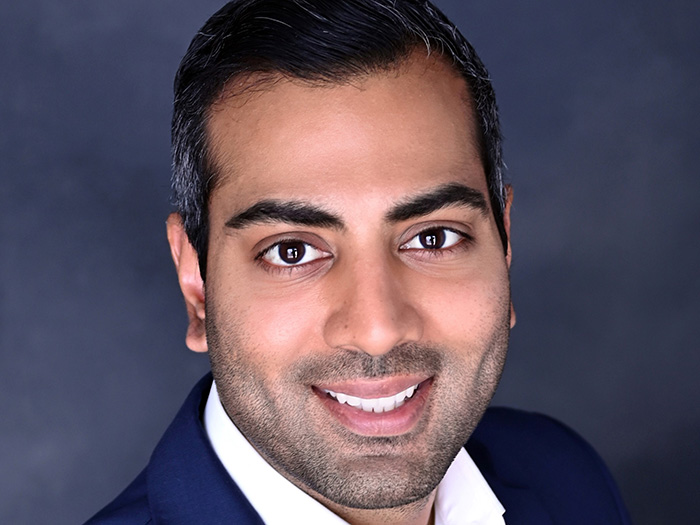Education
A Foreign Education

As more and more American colleges and universities broaden their international footprints, their risk profiles also change. Many are expanding to the developing world, where risks are greater. To keep up, a small but growing number of institutions are hiring full-time international risk managers, according to industry leaders.
Of the 4,500-odd American colleges and universities, about 600 employ dedicated risk managers, and 29 employ full-time international risk managers.
“It’s a new trend, and it’s taking root,” said Jean Demchak, the Global Education and Public Entity practice leader for Marsh. Most were hired in the past three years, and their ranks are growing at about 10 per year.
That trend is most visible in large universities with very mature international programs. However, small schools, including many community and junior colleges, also have international programs that require risk management.
Gone are the days when mere undergraduate study-abroad programs defined an institution’s international presence, said Joan Rupar, division president, Foreign Casualty, AIG.
The traditional health and safety risks to undergraduates remain, but are now complicated by increasingly commercialized enterprises involving faculty and local nationals that raise issues of local and international law, employment and environmental regulations. Trips to remote, undeveloped, and politically unstable locations introduce yet a new set of medical access, kidnap and crime risks.
“When institutions contract with commercial entities for clinical trials or to use their engineering or agriculture expertise in the market, their scope of liability opens considerably,” said Rupar.
“Institutions plan to bring the litigation back to the U.S. if anything happens, but that doesn’t always happen.”
Yet institutions take on the risks with zeal, since foreign programs prepare students for a globalized workplace and political environment, and commercial opportunities compensate for diminishing public education funds as tuition soars, said Paul Pousson, associate director of risk management at The University of Texas System. “Every university president wants to expand the institution’s foreign footprint.”
Compliance With Local Laws
Mike Liebowitz, senior director of enterprise risk management and insurance, New York University — who is one of the 29 full-time international risk managers — said institutions must protect themselves with broad coverage that complies with local regulations.
Domestic insurance policies may be useless for overseas claims because many countries require a licensed insurer, Liebowitz said. U.S. coverage might not be valid in another country because the local coverage is often taxed.
“It’s a revenue source for the country,” Liebowitz said.
Although most exposures for foreign campuses are not much different from those in the United States, employment exposures are a notable exception. When institutions hire from the local population, as foreign campuses and research facilities inevitably will do, risk managers should examine the full battery of employment issues, said Pousson. Those questions include:
• What’s the position to be filled?
• How are employees paid?
• What are the tax issues?
• What are the fringe benefits?
• What are the banking and cash management issues?
• Will the institution open a local bank account?
• Who will have access to the account?
• Who will reconcile it?
Institutions must also comply with local building and construction codes when they buy or renovate property, said Harsh Dutia, vice president, Multinational practice, Marsh USA. “They’re concerned about being good corporate citizens in these countries.”
When setting up the foreign program, Pousson said, most institutions need to tap legal and accounting consultants external to the school. In some cases, those may be professionals in the host country.
Mitigating Health and Safety Risks
Although commercial exposures account for a large and growing part of universities’ international risk, the traditional one — students studying abroad — remains Temple University’s single greatest international risk, said Lisa Zimmaro, assistant vice president for risk management and treasury, Temple University.
“You have a population of 18- to 24-year-olds who think they’re immortal,” she said. “They’re not old enough to drink legally at home, and suddenly they can order a drink. They take risks.”
Some trips are risky simply by virtue of their purpose and location. For example, said Bill Hoye, executive vice president and chief operating officer, IES Abroad, which manages 100 study-abroad programs in 36 global locations, a service-learning trip to an AIDS clinic or a construction site in Africa may carry a range of developing world risks: illness and injury, remoteness and access to medical care.
“You have a population of 18- to 24-year-olds who think they’re immortal.”
— Lisa Zimmaro, assistant vice president, Temple University
“Before you go, have a plan in place,” Hoye said. That may mean bringing a sophisticated medical kit as well as trained and certified first responders.
“You identify the foreseeable risks in that environment and then tailor a plan that spells out how you respond to each risk.”
Safe educational travel is itself a topic of academic research as well as a cottage industry. UCLA’s Center for Global Education provides an exhaustive clearinghouse of best practices and information, including checklists, to help institutions plan for conditions around the world, such as the lack of smoke detectors in France, penalties in Singapore for chewing gum, which way to look before crossing the street in Auckland and evacuations from war zones.
The University of Pennsylvania emphasizes pre-departure preparation and training of its students, establishing contingency plans for “every imaginable” situation, including kidnap, ransom and war, said Jaime Molyneux, director of international risk management, University of Pennsylvania. Where some institutions use commercial travel tracking systems to broadcast alerts and establish a head count in emergencies, Penn requires students to use its homegrown travel tracking system.
Many risk managers and insurance brokers advocate for site visits and assessments when possible. Liebowitz of NYU — a “risk-conservative” school — has visited many of its campuses on every continent except Antarctica. Zimmaro of Temple University credited her site visits with being able to evacuate students from Japan without undue incident after the 2011 earthquake and tsunami. “It was the first time I chartered a plane,” she said.
If they can’t make site assessments, said Rupar of AIG, risk managers at least should learn “an awful lot” about building codes, safety and security in locations of repeat travel, and facilities used as classrooms. That information will transfer to the students and faculty in pre-trip training. Some institutions that can’t make site visits choose to contract with vetted and established assistance providers, such as International SOS, a medical and travel security services company, or the travel tracking service company Terra Dotta Software, which pushes out alerts, about say, a dengue fever outbreak in Ecuador, to affected travelers, per their itineraries.
The most effective mitigation, Pousson said, involves internal cross-collaboration between risk managers, international studies, faculty and athletics to hash out the full scale of the foreign undertaking. Some institutions tackle this through international oversight committees, said Rupar. “They gather all the stakeholders at the table to say, ‘This is the program we want, and these are the risks. How do we protect the university’s assets?’ ”
One of the potentially best training programs seldom takes place in the United States, said Gary Rhodes, director, UCLA Center for Global Education: foreign language instruction in the early grades, when the child’s neural pathways for language are still elastic. “It’s harder to learn a language at the college level,” he said.
Premium Management
Many colleges and universities belong to self-insured consortia, and more want to belong, said Jan Trionfi, risk management, environmental health & safety, Central Michigan University (CMU), which belongs to the Michigan Universities Self-Insurance Corp. (MUSIC), a consortium of 11 Michigan public universities.
CMU buys its “very good, very broad” foreign liability insurance through the consortium at about a 15 percent savings, thanks to the volume purchase. Coverage includes general liability, property, auto liability, workers’ compensation, and the once exotic but now routine kidnap, ransom, emergency evacuation and repatriation coverage. Some but not all MUSIC members buy the policy, which isn’t included in the core general liability coverage. Because each institution has its own risk tolerance, they don’t share risk, instead buying stand-alone policies, said MUSIC’s broker, Jerry McKay, senior vice president, Marsh Inc.
In addition to cost savings, McKay said, consortia members benefit from sharing best practices. “Typically, the larger members develop best practices that they share freely with the other members.”
“Consortia are a forum for members to discuss how they found missing travelers, how they keep track of them, how they’ve helped them, what’s their disaster plan,” said Rupar.
“That takes a lot of collective thinking, and the result is a very good thing.”










